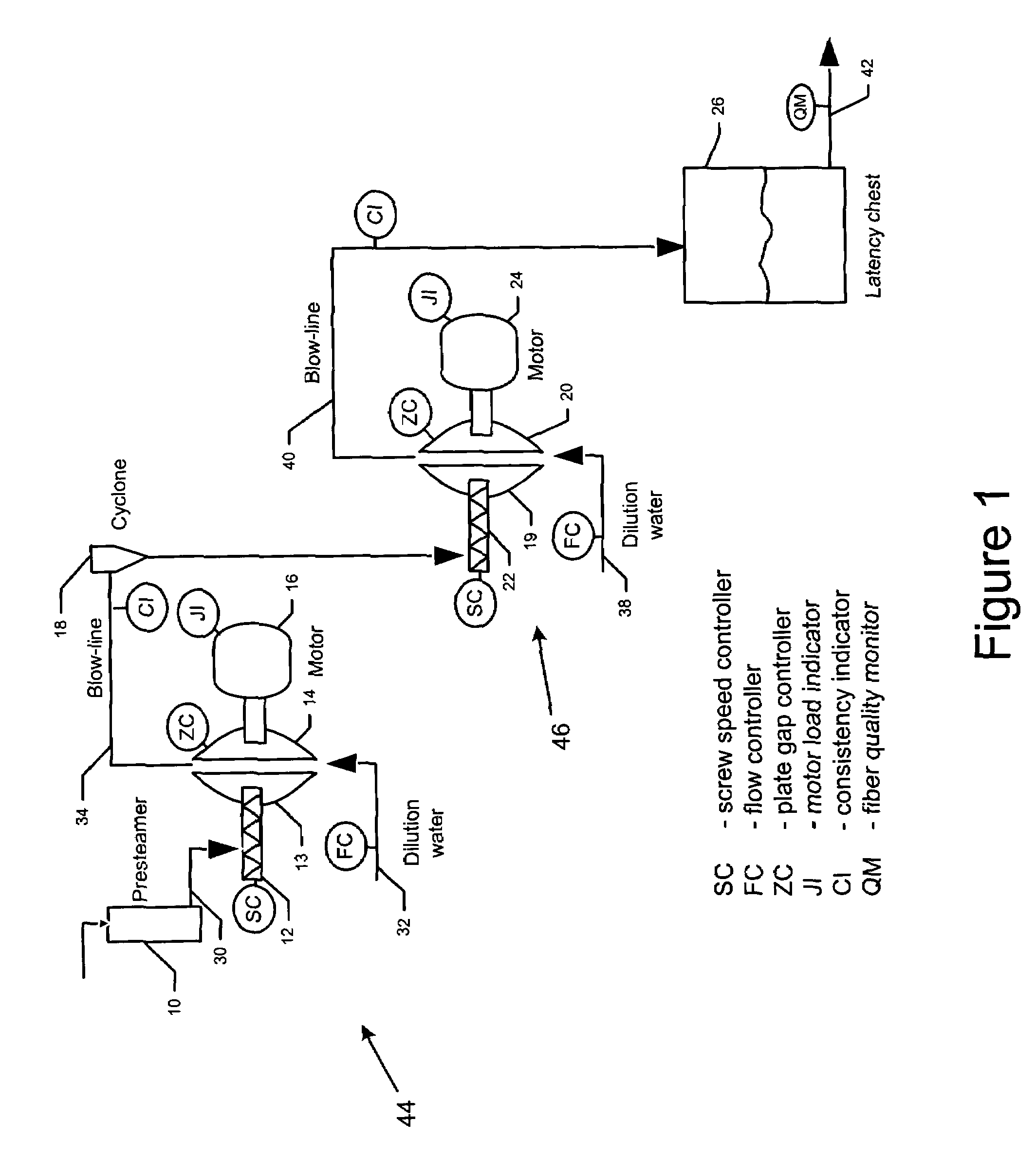System and method for controlling a thermo-mechanical wood pulp refiner
a thermo-mechanical wood pulp refiner and control system technology, applied in the field of pulp refining and papermaking, can solve the problems of inability to provide adequate control of both fast and slow dynamics, and cannot be directly extended to a centralized framework by utilizing a single mpc controller, so as to improve pulp quality, reduce energy consumption, and increase throughput
- Summary
- Abstract
- Description
- Claims
- Application Information
AI Technical Summary
Benefits of technology
Problems solved by technology
Method used
Image
Examples
Embodiment Construction
[0032]The present invention is directed to techniques for controlling a thermo-mechanical pulp (TMP) process by which wood (or other fibrous raw material) is reduced to a fibrous mass which is used in papermaking. A TMP process can employ a single refiner line that empties into a latency chest or it may employ a plurality of parallel refiner lines that empty into a common latency chest. Each refiner line includes at least one refiner and preferably each line includes two or more refiners that are connected in series.
[0033]The present invention can be applied to control any of the individual refiner lines in a TMP process. Thus, the phrase the “entire” TMP process (or “entire” TMP refining process) is meant the process that is encompassed by a refiner line.
[0034]While the invention will be illustrated in connection with a single refiner line (with two refiners in the line) of a TMP process, it is understood that the present invention is applicable to any TMP process that includes at ...
PUM
| Property | Measurement | Unit |
|---|---|---|
| temperature | aaaaa | aaaaa |
| execution frequency | aaaaa | aaaaa |
| pressure | aaaaa | aaaaa |
Abstract
Description
Claims
Application Information
 Login to View More
Login to View More - R&D
- Intellectual Property
- Life Sciences
- Materials
- Tech Scout
- Unparalleled Data Quality
- Higher Quality Content
- 60% Fewer Hallucinations
Browse by: Latest US Patents, China's latest patents, Technical Efficacy Thesaurus, Application Domain, Technology Topic, Popular Technical Reports.
© 2025 PatSnap. All rights reserved.Legal|Privacy policy|Modern Slavery Act Transparency Statement|Sitemap|About US| Contact US: help@patsnap.com



